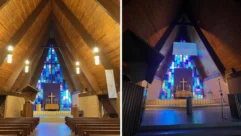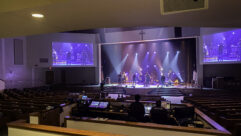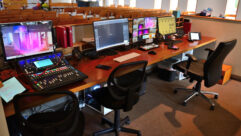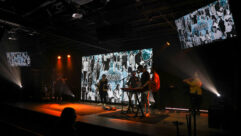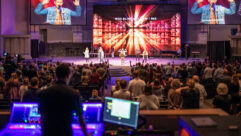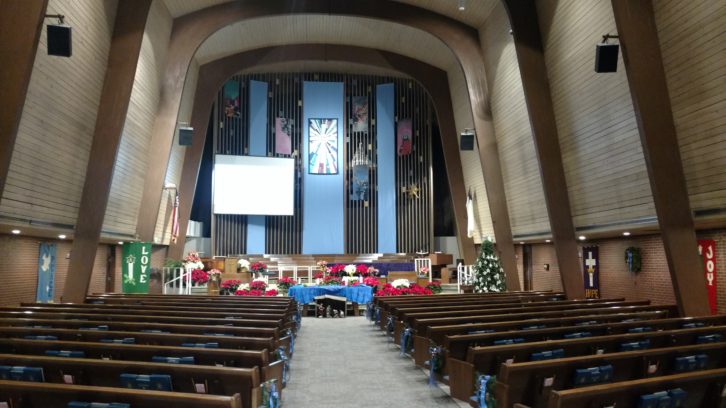

The 19th century town of Arvada, Colorado is now a thriving commuter suburb of 112,000 people. The Arvada Presbyterian Church goes back to Arvada’s early years, beginning in 1904 with a congregation of 14, which has grown to nearly 300.
Services are mostly traditional with a 20- to 30-voice choir. An electronic keyboard and an assortment of microphones are obvious concessions to modern technology. But behind the scenes, a state-of-the-art Symetrix Prism 12×12 DSP manages the church’s sound system, offering auto-mixing with a simple user interface, with access to deeper features when needed.
Church leaders wanted to replace the analog-based system with “something completely automated that could be set up for a few different scenarios, using presets,” explains Dave Kistler, president of systems integrators Equalized Productions, which designed and installed the Symetrix system. “They wanted access to the back end, with the EQs and limiters, but they don’t intend to mess with that for the most part. And they wanted a system that could be quickly and easily reset to its standard settings.”
The church has an assortment of handheld and lapel wireless microphones, the lectern mic, choir microphones (pencil condensers), and wired mics for the praise singers, plus the electronic keyboard. All told, the system uses about 20 audio channels, so the Symetrix Prism 12×12 is connected via Dante to a Symetrix xIn 12 analog input expander, for a total of 24 analog inputs, leaving room for growth. The Prism’s analog outputs feed the church’s older Crown and QSC amplifiers, which in turn drive legacy QSC speakers in the sanctuary and Atlas in-ceiling speakers in the lobby.
A Dell touchscreen PC runs Symetrix SymVue software. “They log into their computer, launch the application, and enter in a four-digit PIN for security purposes,” Kistler details. “That brings up a screen that allows them to go into the front-of-house mixer, the stage floor-monitor mixer, and the choir monitor mixer, each of which is independently mixed in the Symetrix Prism using the touchscreen. Preset buttons call up the different situations they’ll encounter.
“We choose Symetrix primarily for the ease of programming,” Kistler explains. “SymView was the key component. Creating the back end is so much simpler than with other DSPs. I can clean up the console, so everything is simple. I can get rid of the Solo button, the Level button, and anything else they might hit that could mess things up. We label the mixers with the channel number that is associated with the floor box, and we create labels that makes sense to them, like ‘This is Pastor Bill’s mic.’
By doing all mixing and processing in the Prism, Equalized Productions was able to remove not only the old analog mixer but old rackmount gear, such as graphic EQs. “We took 32 spaces of equipment down to 2,” Kistler says.
PRODUCT AT WORK
This server-based application controls Symetrix DSPs and enables users to author custom GUIs in minutes using Symetrix’ Composer running on the Symetrix Control Server hardware.


